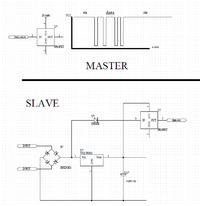casdsys
Newbie level 3

- Joined
- Aug 13, 2014
- Messages
- 4
- Helped
- 0
- Reputation
- 0
- Reaction score
- 0
- Trophy points
- 1
- Activity points
- 41
I have data coming out of a device at 5vdc. in order to increase the voltage I can drive a transistor or mosfet with a VCC of my chosing. .i.e having a data line of say 20vdc.
What or how would you make it so I can input data at between 10 - 20vdc and get data at 5vdc ( basically just the reverse of what I started out with ).
Optocoupler perhaps???
What or how would you make it so I can input data at between 10 - 20vdc and get data at 5vdc ( basically just the reverse of what I started out with ).
Optocoupler perhaps???


